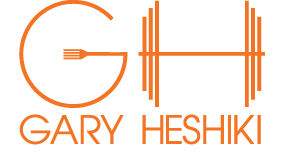Technique Breakdown: Improving Front Rack Position
Why I Heart the Front Squat
1. Because the bar is positioned in the front, it gives the lifter a counterbalance which allows for better position and often results in improved depth.
2. When you have your arms up, the lats are lengthened. The lack of lat involvement then accounts for lesser loads than the back squat due to the fact the lats are needed to create greater core stability. This means, in order for you to move some big weights on the front squat you have to really strengthen your core.
3. Piggybacking off the point above, it then allows the lifter who may have a lordotic (arched) posture to squat much deeper/cleaner with the front squat. Of course, if they have an excessive lordosis and anterior pelvic tilt, you may not want to start them off with a barbell front or back squat.
On the opposite end of the postural spectrum, we have kyphotic posture, or a rounded back like a scared cat. Which I believe would be one of the worst positions a lifter can be in for front squatting. When your office desk worker gets to the gym and wants to front squat, they may have some issues due to the mobility demands of the front squat.
You need to get the arms into a combination of shoulder flexion and external rotation. A lot of times we think we have immobile wrists or some wacky self diagnosis. Often times it's just some soft tissue restrictions and mobilizations needed prior to lifting.
Step 1: Soft Tissue Work
The rhomboids also have to contract isometrically and can fatigue to the point to where these muscles can no longer maintain proper position as well. This influences bar position as well. I would roll out the entire trap/rhomboid area.
Releasing the pecs and subclavius area goes a long way in helping to achieve a better rack position as well. Video courtesy of Eric Cressey.
Important to keep these loose, even if you're not front squatting, your hands will thank you.
The triceps, in particular the long head is often responsible for being short and not allowing the lats to get to full lengthening.
Step 2: Mobilization
With a moderately heavy band around your elbow, drive it forward and down while simultaneously exhaling to maintain proper rib position. You'll want to perform this in a contract and relax manner.
I would externally rotate (palm facing the ceiling) and then lean back and get a good pull on the lats. You can also do this internally (back of your hand facing you) too.
A few final notes:
Elbows up is a cue that you'll hear very often. This also reinforces the most important position of the movement where the bar will want to roll down at the bottom. The goal should be to keep the elbows pointing as far upwards as possible. think a parallel line between your upper arm and the floor.
Another issue is the california style or cross armed grip which I'm not a big fan of. Under substantial load one elbow stays higher than the other and can be detrimental to proper structural alignment of the shoulders and can potentially create a chain of imbalances through your hip and knee.
This question came over instagram, if you should have any questions use the hashtag #askghfitness and I'll create a piece of content to hopefully solve your problem!

